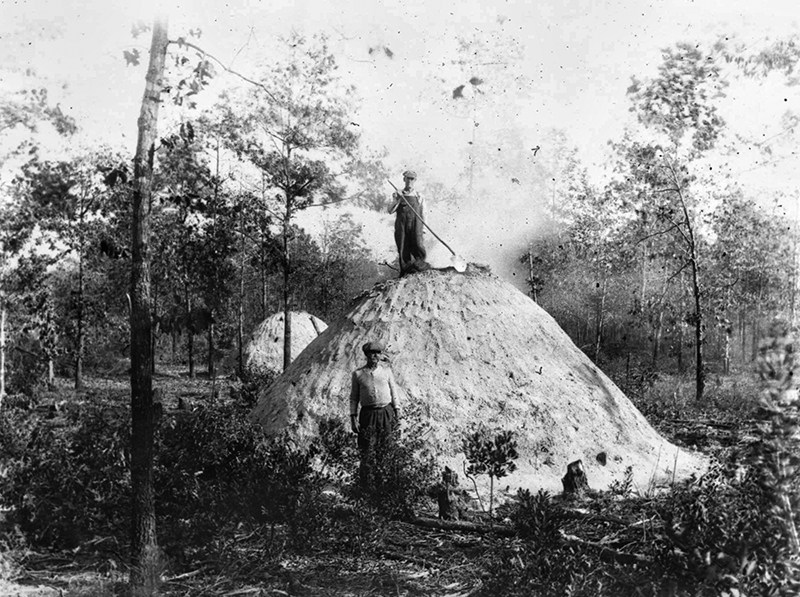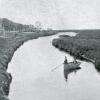Making Charcoal in Woods of Sussex near Millsboro
During the late 1800s and early 1900s, scenes like this one from November 1935 near Millsboro were commonplace in woodlots across Sussex County. Making charcoal was an important cottage industry that required skill and access to cut-over timber where sapling-size and small trees were available as the source material. The 6-foot-long poles were stacked upright and tight (inset photo) around a center post that would ultimately be removed to provide air for the ultra-slow, smoldering burn needed to transform the wood into charcoal. Mud and other materials were packed over the mound of sticks to prevent the intrusion of too much air which could result in the sticks bursting into a full-blown fire and being converted to a pile of ashes instead of the hot-burning charred wood we know as charcoal.
The charcoal was used in industrial applications, such as the processing of iron ore, where the higher heat of burning charcoal was required to convert raw ore into workable iron. Great care and around-the-clock oversight were needed for the charcoal-making operations to ensure that no cracks in the mound could lead to a fire rather than the steady smoldering needed to result in charcoal.























































